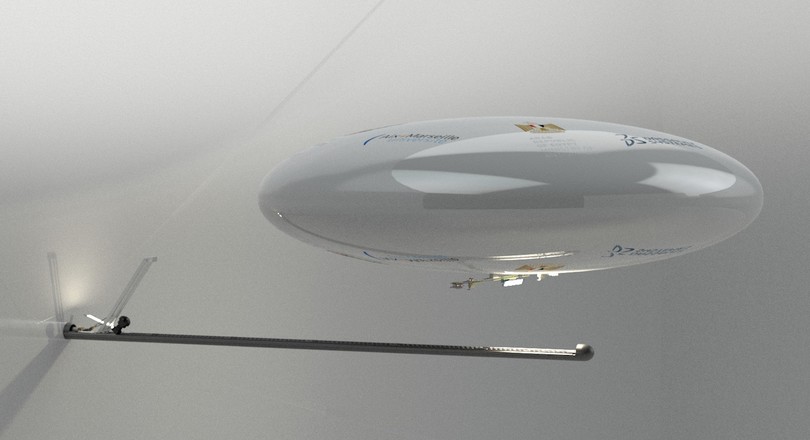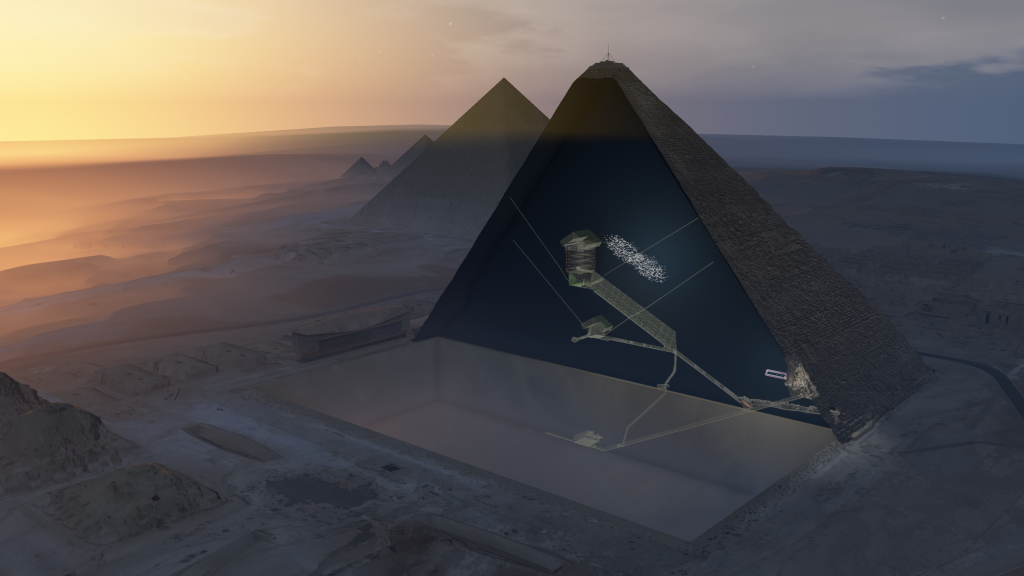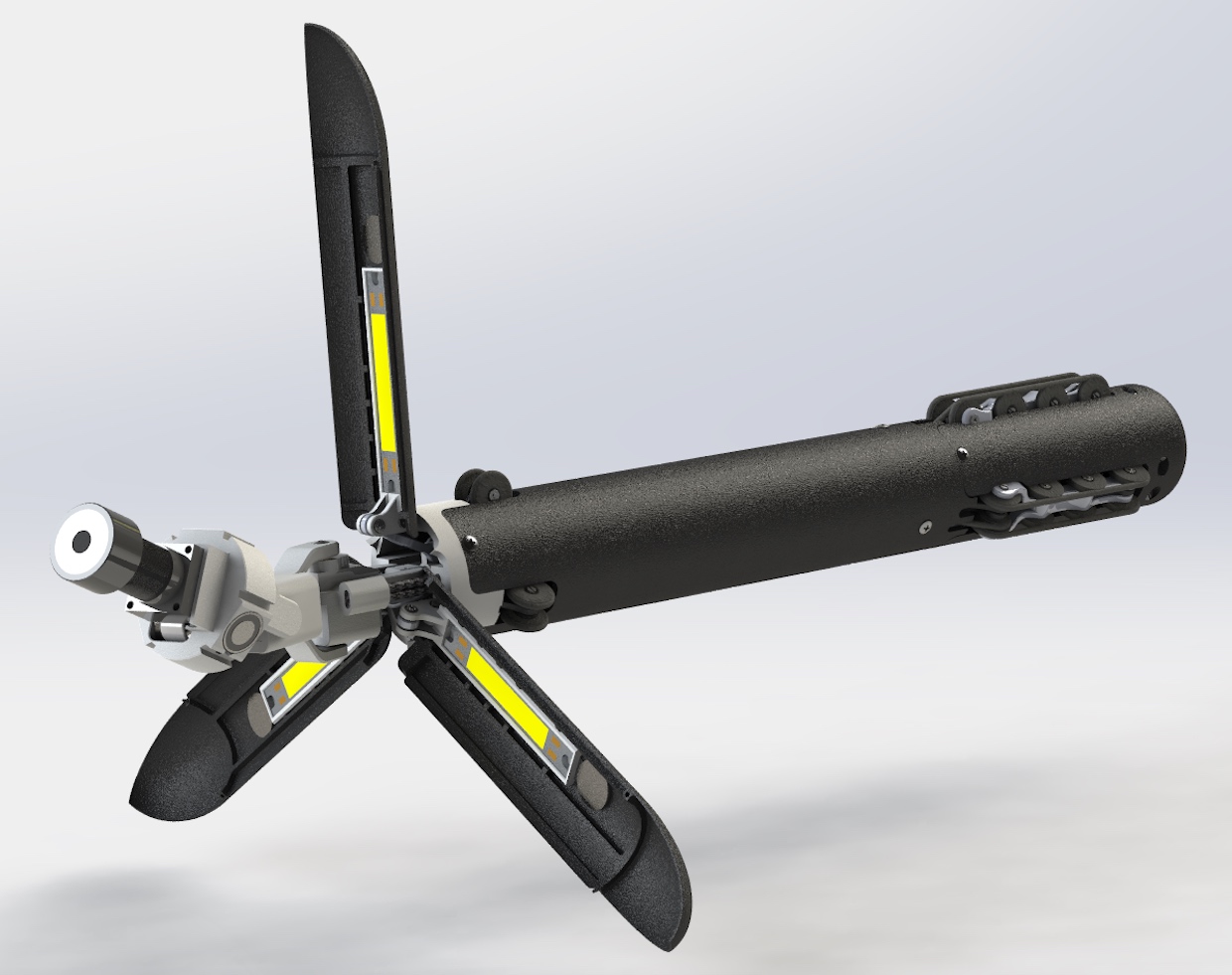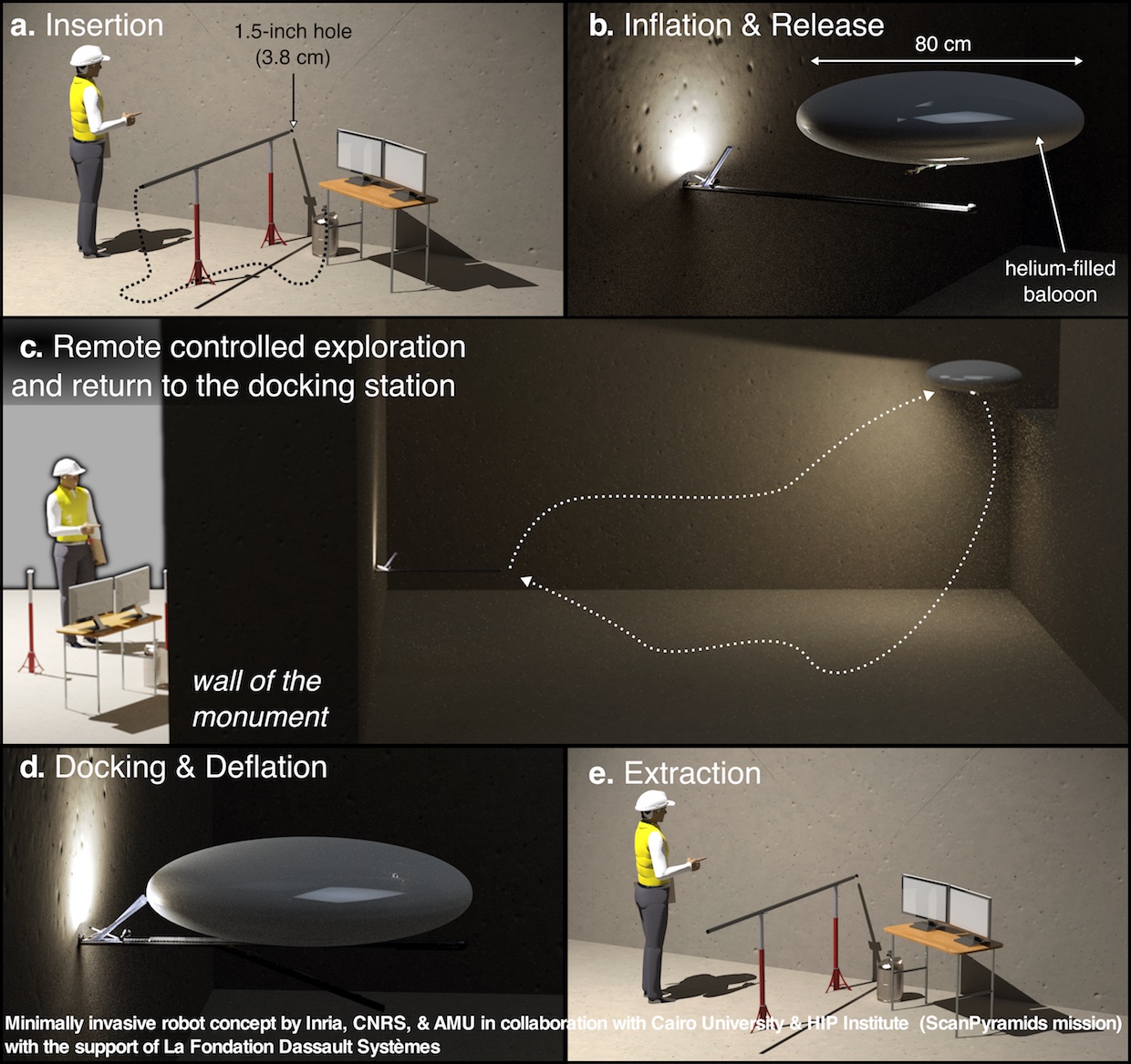
French researchers are working on a robot to inspect the secret chamber in the Pyramid of Khufu. The chamber was discovered last month with the aid of cosmic radiation. The robot is now set to study the pyramid without damaging it.
The newly discovered space is situated behind the so-called King's Chamber in the pyramid of Khufu, also known as the pyramid of Cheops. Yet there would seem to be no entrance to the secret chamber. However, the King's Chamber features an as yet unidentified corridor, closed off by a door.

The Egyptologists want to limit damage to the pyramid wherever possible, and therefore cannot simply break down the door. Instead, they drilled a peep-hole in order to inspect the space behind it using a camera. Unfortunately, that only resulted in views of yet another door.
Unfold and inflate
In order to find out more about the secret chamber, the French Inria and CNRS research institutes are working on a special robot, as reported in their press release (pdf-file). That robot will fit through a drill hole of 3.5 cm in diameter, and will then unfold and inflate itself. After subsequently exploring the empty space, it will be extracted again in its folded state.
There are two phases in the exploration process. To begin with, a tube is inserted, with a wide-angle camera at the end. Once in place, the camera transmits photos of the space to the people behind the controls.

If all looks well, the actual inspection robot, a mini zeppelin, will follow. Once through the drill hole, it inflates itself using helium and starts its flight. The zeppelin has a gondola, containing a motor, sensors, a light source, cameras and a navigation system. All this together weighs no more than 50 grams.

The advantage of the zeppelin over a wheeled robot or a drone is that it is not hindered by possible barriers on the floor of the secret chamber, it can move quickly and it can collide with objects without immediately being written off.
Insect eyes
For its navigation, the robot uses the same optical technique as insects. Their 'eyes' do not generate images as we do, but instead simply register changes in lines, contours, etc. while moving. The major advantage of this is that such 'movement registration' requires far fewer pixels than when constantly generating a complete image. Furthermore, the robot has a magnetic field sensor for orientation purposes and a distance sensor to the ground.
To enable more precise navigation, required for example to ensure that the robot zeppelin also returns to its docking station, the device has an LED which flashes at a high frequency. The sensor can accurately determine its location in relation to the space, thanks to reflection of that signal.
No 21st century electronics debris
A major challenge is to not leave behind any debris during the entire process. How can you inflate the zeppelin and deflate it again, without leaving behind any modern electronics? Attaching a wire to the robot is not an option: it would be too much of a hindrance and would restrict the robot's movement.
It is not known for certain whether the robot will actually inspect the secret chamber. That all depends on the final performance of the mini zeppelin. And, importantly, the Egyptian authorities must grant their permission.
Should the robot not be able to undertake its mission in the pyramid of Khufu, the French researchers foresee enough other applications, such as the inspection of nuclear installations.
If you found this article interesting, subscribe for free to our weekly newsletter!
Nieuwsbrief
Vond je dit een interessant artikel, abonneer je dan gratis op onze wekelijkse nieuwsbrief.

